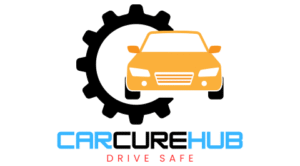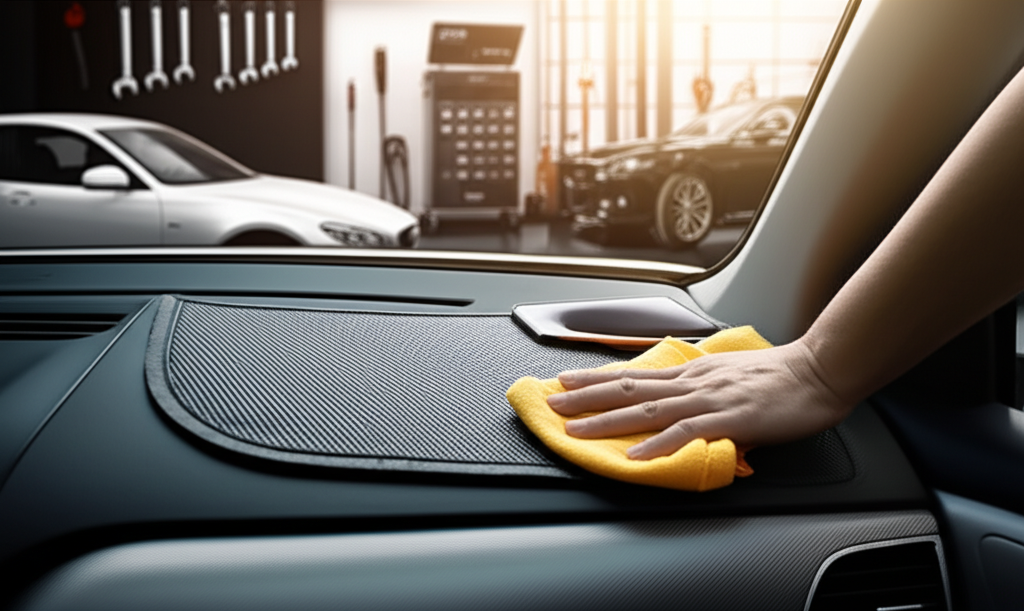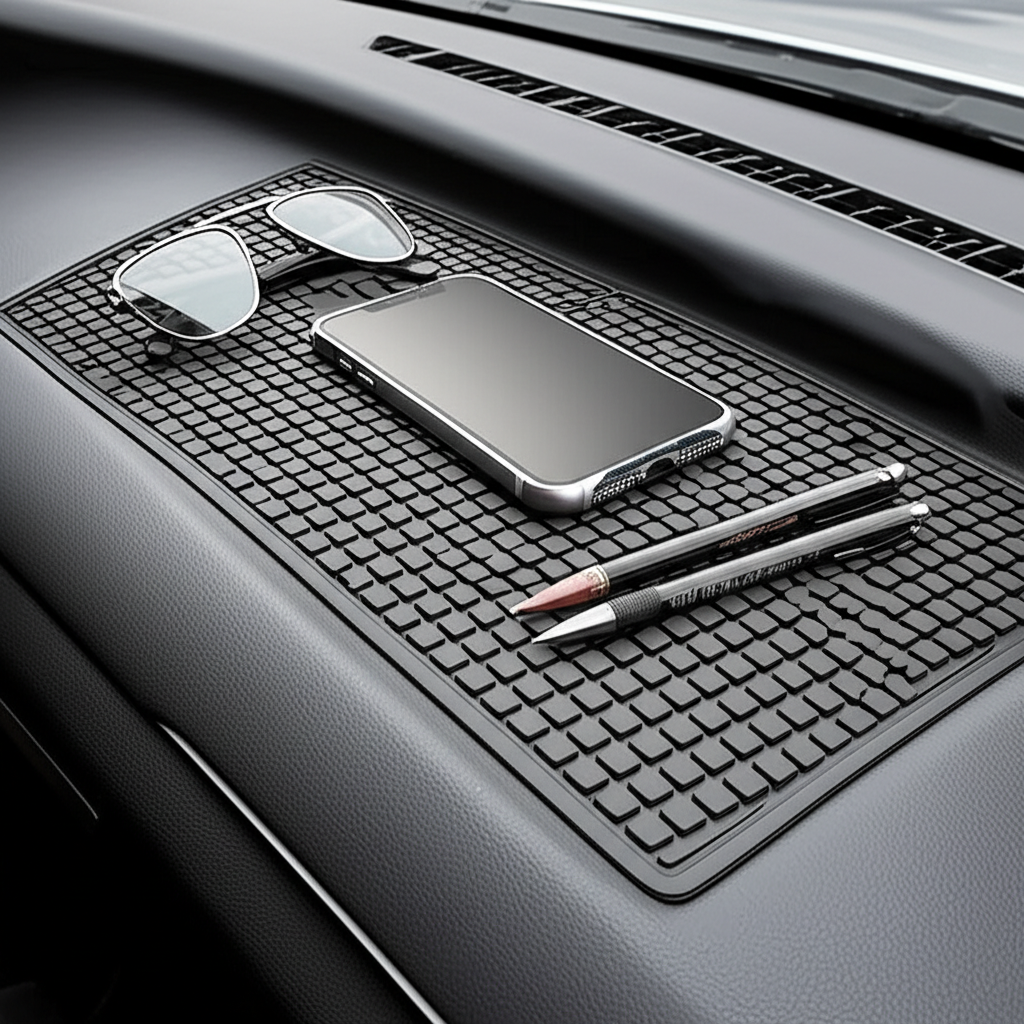Dashboard mats are essential non-slip accessories for your car, preventing items from sliding, protecting your dashboard from sun damage, and keeping your interior looking neat and tidy. They offer easy protection against everyday wear and tear, making them a practical upgrade for any vehicle.
Ever feel like your car’s dashboard is a runaway train for your stuff? Sunglasses slip, coins scatter, and sometimes your phone takes an unwelcome journey. It’s a common annoyance that can make driving feel a bit chaotic inside your car. But what if there was a simple, affordable fix? Thankfully, there is! A non-slip dashboard mat is your secret weapon against that sliding chaos. It’s like giving your dashboard a cozy, grippy blanket that not only stops things from moving but also helps keep your interior looking its best. In this guide, I’ll walk you through everything you need to know about these handy mats and how they can protect your car.
Why a Non-Slip Dashboard Mat is a Smart Choice for Your Car
Think of your dashboard as the main stage of your car’s interior. It’s where you often place essential items, and it’s constantly exposed to the sun’s rays. A good quality, non-slip dashboard mat isn’t just about stopping things from sliding around; it’s a multi-functional tool that offers valuable protection and enhances your driving experience. Let’s dive into the reasons why this simple accessory is a must-have.
Superior Grip and Item Security
The most obvious benefit of a non-slip dashboard mat is its ability to prevent items from sliding. We’ve all experienced that heart-stopping moment when keys or a phone attempt to make a break for the floor mats during a sudden stop or sharp turn. A non-slip mat creates a grippy surface that holds your belongings in place. This significantly reduces distractions while you’re driving, allowing you to focus on the road. Whether it’s your sunglasses, a small GPS device, a pack of tissues, or your daily commute essentials, a dashboard mat keeps them secure and within easy reach. This simple feature contributes directly to a safer driving environment.
Dashboard Protection from Sun Damage
Car dashboards are often made from materials like vinyl or plastic, which are susceptible to damage from prolonged exposure to sunlight. The sun’s ultraviolet (UV) rays can cause dashboards to crack, fade, and become brittle over time. This not only looks unsightly but can also lead to more significant damage and costly repairs down the line. A dashboard mat acts as a protective shield, absorbing and deflecting some of the UV radiation. By covering a significant portion of the dashboard, it significantly reduces direct sunlight exposure to the underlying material, helping to preserve its condition and appearance for years to come. You can learn more about the effects of UV radiation on automotive materials from resources like the Environmental Protection Agency (EPA), which often discusses the impact of environmental factors on materials.
Preventing Scratches and Wear
The surface of your dashboard, while often designed to be durable, can still be prone to scratches from everyday items. Placing keys, coins, or even rough-surfaced electronic devices directly on the dashboard can leave unsightly marks. A non-slip mat provides a softer, more forgiving surface, acting as a buffer between your accessories and the dashboard material. This helps maintain the pristine look of your car’s interior, preventing minor abrasions and scuffs that can detract from its overall appearance and resale value.
Reducing Interior Heat Buildup
During hot, sunny days, dashboards can become incredibly hot to the touch, absorbing a significant amount of solar heat. This heat can then radiate into the car’s cabin, making it uncomfortable and increasing the workload for your air conditioning system. While a dashboard mat won’t completely eliminate heat buildup, it can help to insulate the dashboard surface to some extent. By providing an extra layer, it can absorb some of the heat and reduce the surface temperature, making the interior slightly more comfortable when you first get into the car.
Aesthetic Enhancement
Beyond protection, dashboard mats can also contribute to the overall look and feel of your car’s interior. They come in a variety of materials and designs, from sleek, minimalist black to textured finishes that complement your car’s existing decor. A well-chosen mat can add a touch of style and organization, making your dashboard look tidier and more intentional. It’s a small change that can make a surprising difference in how your car’s interior feels and looks.
Types of Dashboard Mats: Finding the Perfect Fit
When you start looking for a dashboard mat, you’ll quickly realize there isn’t just one type. They vary in material, design, and how they stay put. Understanding these differences will help you choose the one that best suits your needs and your car.
Material Matters: What Are They Made Of?
The material of your dashboard mat significantly impacts its grip, durability, and appearance.
Silicone Mats: These are incredibly popular for their excellent non-slip properties. Silicone is naturally grippy, flexible, and often washable. They conform well to the dashboard’s contours and are generally resistant to high temperatures, making them ideal for sunny climates. Many silicone mats are also hypoallergenic.
Rubber Mats: Similar to silicone, rubber offers great grip and durability. They tend to be a bit thicker and can provide more cushioning. Some rubber mats might have a slight odor when new, but this usually dissipates over time. They are also quite resilient to wear and tear.
Carpet or Fabric Mats: These mats mimic the look and feel of carpeted dashboards. They can add a softer, more luxurious touch to your interior. While they offer good grip, they might be more prone to trapping dust and debris, and can be harder to clean than silicone or rubber. They are often custom-fitted to specific car models.
Gel Mats: Gel mats offer a sticky, yet residue-free, grip. They work by creating a vacuum-like effect combined with their inherent stickiness. They are highly effective at holding items but can lose some of their grip over time as they accumulate dust. Cleaning them usually involves rinsing with water to restore their stickiness.
Leather or Faux Leather Mats: For a more premium look, leather or faux leather mats can be a stylish choice. They offer decent grip and a sophisticated appearance. However, they can be more expensive and might require specific care to maintain their look and feel.
Design and Fit: Universal vs. Custom
Dashboard mats come in two main types regarding fit:
Universal Mats: These are designed to fit a wide range of vehicles. They are typically cut into general shapes and sizes that can be trimmed by the user to match their dashboard more closely. They are a more budget-friendly option and offer good flexibility.
Custom-Fit Mats: These are specifically designed for particular makes and models of cars, or even for specific dashboard areas. They provide a perfect fit, ensuring maximum coverage and a seamless look. While they might be more expensive, they offer the best aesthetics and functionality for your specific vehicle. Many automotive accessory companies offer custom-fit options based on detailed dashboard schematics.
Adhesion Methods: How They Stay Put
Most non-slip dashboard mats rely on the material’s inherent grip. However, some might come with additional features to ensure they stay in place:
Natural Grip: The primary method for silicone, rubber, and gel mats. Their textured surfaces create friction against the dashboard.
Micro-Suction Cups: Some mats feature a pattern of tiny suction cups on the underside for extra hold.
Adhesive Backing: While less common for everyday mats (more typical for permanent installations), some mats might have a light adhesive. It’s crucial to ensure any adhesive is residue-free for easy removal.
Choosing the Right Non-Slip Dashboard Mat for Your Car
With so many options, picking the right mat can seem a bit daunting. But let’s break it down into simple steps to help you make the best choice.
Step 1: Assess Your Needs
Before you start browsing, think about what you primarily need the mat for.
Frequent Item Placement: Do you often place your phone, wallet, or keys on the dashboard? If so, prioritize superior grip materials like silicone or rubber.
Sun Protection: If your car is parked in direct sun for long periods, look for mats made of UV-resistant materials.
Aesthetics: Do you want a mat that blends in seamlessly, or one that adds a touch of style? Consider the color and texture that will best complement your car’s interior.
Budget: Determine how much you’re willing to spend. Universal mats are generally cheaper than custom-fit options.
Step 2: Consider Your Dashboard Material and Shape
The material of your dashboard and its contours can affect how well a mat adheres.
Textured Dashboards: Most mats will adhere well.
Smooth, Shiny Dashboards: Silicone and gel mats often work best here due to their advanced grip technology.
Curved Areas: Flexible materials like silicone are ideal for navigating curves without lifting.
Step 3: Read Reviews and Check Specifications
Once you have a few options in mind, do your homework.
Look for Reviews: See what other car owners say about the grip, durability, and ease of cleaning. Pay attention to comments about whether the mat leaves residue.
Check Dimensions: If opting for a universal mat, compare its dimensions to your dashboard’s general area to ensure adequate coverage.
Material Quality: Ensure the product description specifies UV resistance if that’s a priority.
Step 4: Installation and Maintenance Tips
Most dashboard mats are incredibly easy to install and maintain.
Cleaning Your Dashboard: Before placing the mat, clean your dashboard thoroughly with an automotive interior cleaner and a microfiber cloth. Ensure it’s completely dry. This will help maximize the mat’s grip and prevent dirt from getting trapped underneath.
Placing the Mat: Gently position the mat on the dashboard, smoothing out any bubbles or wrinkles.
Cleaning the Mat: For most silicone and rubber mats, occasional cleaning with mild soap and water is sufficient. Rinse thoroughly and let it air dry completely before placing it back. For gel mats, rinsing with water is usually all that’s needed to restore stickiness. Avoid harsh chemicals that could degrade the material. For fabric mats, follow the manufacturer’s cleaning instructions, which might involve vacuuming or spot cleaning.
Pros and Cons of Using a Dashboard Mat
Like any car accessory, dashboard mats have their advantages and disadvantages. Weighing these will help you decide if it’s the right choice for you.
The Upside: What Makes Them Great
| Pros | Description |
|---|---|
| Enhanced Item Security | Effectively prevents items from sliding during transit, reducing driver distraction. |
| Dashboard Protection | Shields against UV damage, fading, and cracks caused by sun exposure. |
| Scratch Prevention | Protects dashboard surface from scratches caused by keys, coins, and accessories. |
| Reduced Heat Absorption | Helps insulate the dashboard, potentially lowering interior temperatures slightly. |
| Improved Aesthetics | Adds a tidier, more organized, and stylish look to your car’s interior. |
| Easy Installation | Typically requires no tools and can be placed within minutes. |
| Easy Maintenance | Most are washable or easily wiped clean. |
| Affordable Upgrade | A relatively inexpensive way to protect and improve your car’s interior. |
The Downside: What to Consider
| Cons | Description |
|---|---|
| Dust Attraction | Some materials, especially gel and silicone, can attract dust, requiring regular cleaning to maintain grip. |
| Potential for Residue (Rare) | While uncommon with quality products, some cheaper mats might leave a slight residue if left in place for extremely long periods or if removed aggressively. Always use reputable brands. |
| Fit Issues (Universal) | Universal mats may not perfectly contour to all dashboard shapes and may require trimming, which can sometimes lead to an imperfect fit. |
| Traction Limitations | Extremely heavy or oddly shaped items might still shift on some mats, especially during aggressive driving. |
| Aesthetic Preference | Some drivers may not like the look of a mat on their dashboard, preferring the original finish. |
Installation and Maintenance: Keeping Your Mat in Top Shape
Installing your new dashboard mat is usually a breeze. Maintenance is just as straightforward, ensuring it continues to protect your car and keep your belongings in place.
Simple Installation Steps
For most non-slip dashboard mats, the process is incredibly simple:
1. Clean Your Dashboard: This is the most crucial step! Use an automotive interior cleaner and a soft microfiber cloth to wipe down the area where the mat will be placed. Remove any dust, grime, or residue. If your dashboard has a shiny finish, ensure it’s completely dry before proceeding.
2. Position the Mat: Carefully place the mat onto your dashboard. Align it to your preference, ensuring any pre-cut sections (like around stereo speakers or vent openings) are correctly positioned.
3. Smooth It Out: Gently press down on the mat, starting from the center and working your way outwards. This helps to eliminate any air bubbles and ensures the mat lies flat against the dashboard surface, maximizing its grip.
4. Trim (If Necessary): If you opted for a universal mat and it doesn’t perfectly fit, you might need to trim it. Use a sharp craft knife or sturdy scissors for this. It’s best to trim small amounts at a time until you achieve the desired fit. Measure twice, cut once!
Easy Maintenance for Longevity
Keeping your dashboard mat looking and performing its best is easy with a little care:
Regular Cleaning: Most silicone, rubber, and gel mats can be cleaned by simply removing them from the dashboard, rinsing them under cool water, and gently washing with mild soap if needed. Avoid abrasive cleaners.
Air Dry: Always allow the mat to air dry completely before putting it back on the dashboard. This prevents moisture from being trapped, which could potentially affect your dashboard’s finish.
Dust Removal: If your mat starts to lose its grip (often due to dust accumulation on the underside), a simple rinse with water is usually enough to restore its stickiness. For fabric mats, vacuuming regularly will help keep them free of debris.
* Sun Exposure: While mats help protect your dashboard from the sun, the mats themselves can degrade over time. High-quality mats are designed to withstand UV exposure, but extreme conditions might necessitate replacement after several years.
Where to Buy Your Dashboard Mat
Finding the right place to buy your non-slip dashboard mat is as important as choosing the mat itself.
Online Retailers
The widest selection of dashboard mats can typically be found online. Major e-commerce platforms offer a vast array of brands, materials, and designs. You can easily compare prices, read customer reviews, and find options that might not be available in physical stores. Look for reputable sellers and check product descriptions carefully for material composition and dimensions.
Automotive Parts Stores
Local car parts stores are a great place to check. They often carry a curated selection of popular and practical car accessories. The advantage here is being able to see and feel the materials before you buy. You can also ask store employees for recommendations.
Brand Websites and Specialty Retailers
Many manufacturers of car accessories have their own websites where you can purchase their products directly. This can sometimes offer exclusive deals or access to their full product lines. Specialty auto detailing or customization shops might also carry higher-end or custom-fit options.
Conclusion
Investing in a non-slip dashboard mat is a simple yet highly effective way to protect your car’s interior. From keeping your essentials from sliding around during your commute to shielding your dashboard from damaging UV rays and everyday wear, these mats offer a blend of practicality and protection. They are an affordable upgrade that enhances both the functionality and appearance of your vehicle, making every drive a little more organized and a lot more secure. With a variety of materials and styles available, you can easily find the perfect mat to suit your car and your needs, ensuring your dashboard stays protected and your belongings stay put for years to come.
Frequently Asked Questions (FAQ)
What is a non-slip dashboard mat?
A non-slip dashboard mat is a specially designed mat that you place on your car’s dashboard to provide a grippy surface. It prevents items like phones, sunglasses, and keys from sliding around, and also helps protect the dashboard itself from sun damage, scratches, and heat.
Are dashboard mats safe for my car’s dashboard?
Yes, when made from quality materials like silicone or rubber, dashboard mats are generally safe. They are designed to grip without leaving residue. Some very cheap or old mats might potentially leave a residue or mark, so it’s always best to choose reputable brands and clean your dashboard before application.
How do I clean a non-slip dashboard mat?
Most silicone and rubber mats can be cleaned by rinsing them with cool water and mild soap. Let them air dry completely. Gel mats often only need a water rinse to restore their stickiness. Avoid harsh chemicals that could damage the material.
Will a dashboard mat prevent my phone from sliding?
Absolutely. The primary function of these mats is to provide a secure, grippy surface that holds your phone and other items firmly in place, even during braking or sharp turns. The effectiveness can depend on the mat’s material (silicone, rubber, and gel are excellent) and your phone’s case.
Can I cut a universal dashboard mat to fit my car?
Yes, many universal dashboard mats are designed to be trimmed with
Recent Posts
Worried about what's in your engine oil? We’re diving deep to uncover the truth about car oil and its potential link to cancer, so you can drive with confidence.
Ever wondered if your car oil solidifies in the cold? Find out the surprising truth about oil viscosity when those temps really dip!



